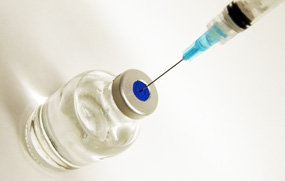
Patients who develop cancers that arise from reproductive cells—known as germ cell tumours (GCTs)—are at an increased risk of developing blood clots in their veins after they receive chemotherapy. As a result they are more likely to develop medical complications that could lead to hospitalization or death.
While treatment guidelines suggest that patients with cancers can be treated with blood thinners to reduce the risk of blood clots, there is insufficient data available to support the use of this treatment in patients with GCTs. Furthermore, there is currently no way to identify patients with GCTs who are at the highest risk of developing blood clots.
To address this problem Dr. Philippe Bedard and collaborators asked whether the size of secondary cancers that spread from GCTs to the lymph nodes could accurately predict blood clot risk. Results from their analysis of over 200 patients with GCT undergoing chemotherapy showed that patients with large lymph node cancers (> 5cm in diameter) were more susceptible to blood clots.
“Using the size of the cancerous lymph node to identify patients who are disproportionately at risk of developing blood clots is extremely appealing because this information is readily available from routine imaging scans taken when a patient is diagnosed,” explains Dr. Bedard. “We’ve already incorporated this into treatment plans at PM.”
Large retroperitoneal lymphadenopathy as a predictor of venous thromboembolism in patients with disseminated germ cell tumors treated with chemotherapy. Srikanthan A, Tran B, Beausoleil M, Jewett MA, Hamilton RJ, Sturgeon JF, O'Malley M, Anson-Cartwright L, Chung PW, Warde PR, Winquist E, Moore MJ, Amir E, Bedard PL. Journal of Clinical Oncology. 2015 January 20. [Pubmed abstract]





Comments